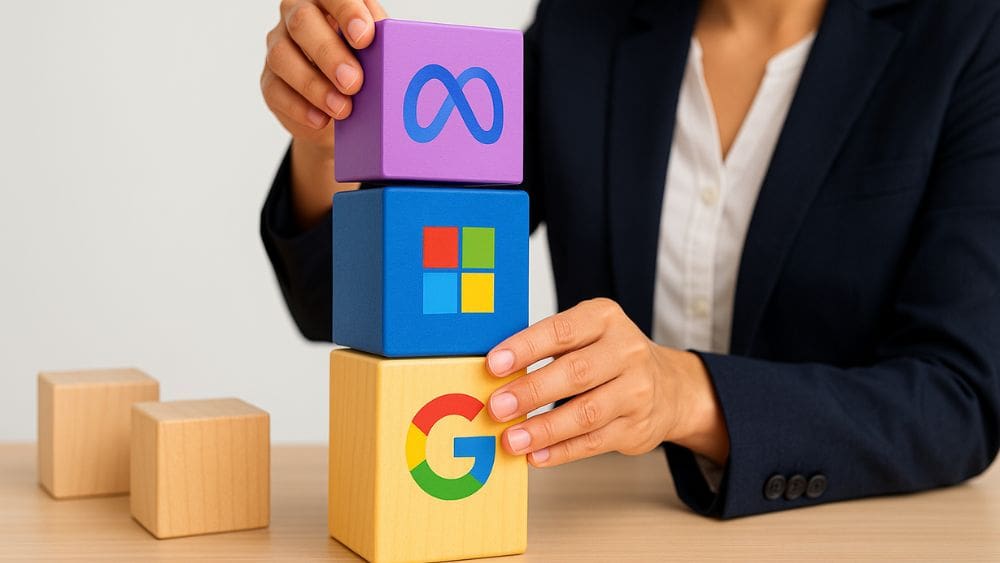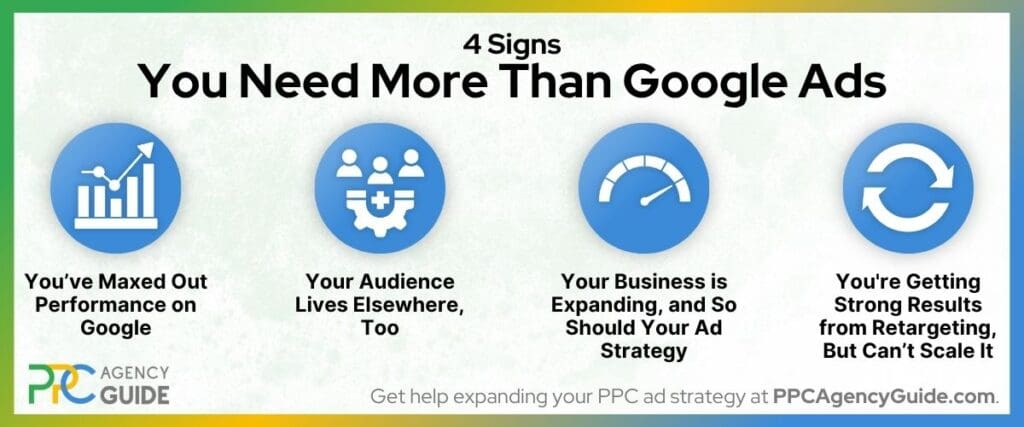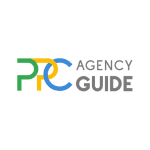
If you’re only running ads on Google, you’re not alone. Most businesses start there, and for good reason. Google offers massive reach, solid targeting, and years of refinement. But there comes a point where relying on a single platform can limit growth or even hold your business back. In this guide, we’ll explore diversifying pay-per-click (PPC) platforms: how to know when it’s time, how to select the right fit for your brand, and how to develop a strategy that works.
Signs to Expand Beyond Google Ads
Before we get into the logistics of diversifying PPC platforms, let’s take a look at some signs that indicate using Google Ads alone is no longer working for you.

You’ve Maxed Out Performance on Google
Google’s scale is unmatched, but it’s not infinite, especially in niche industries or local markets. If your campaigns are well-optimized and you’re still seeing stagnation, it’s likely time to expand beyond Google Ads.
- Plateauing Lead Volume: Despite testing different ad formats and bidding strategies, your lead volume stays flat.
- Rising Costs with Little Return: Your cost-per-click continues to climb, but the quality of leads or revenue does not.
- Limited Inventory or Audience Saturation: You’re targeting all the relevant keywords, but traffic is declining or competition is crowding you out.
At this stage, diversifying PPC campaigns can open up fresh opportunities, lower acquisition costs, and get your brand in front of new, but still relevant, audiences.
Your Audience Lives Elsewhere, Too
Google Ads can reach around 90 percent of all people online, per StatCounter data. However, it’s not where everyone makes decisions. If your business serves B2B buyers, creative professionals, hobbyists, or social-driven consumers, you may be leaving money on the table by not showing up in their preferred environments. If you’re seeing signs that your core audience engages heavily on another platform, it’s time to consider expanding PPC campaigns to meet them there.
Your Business is Expanding, and So Should Your Ad Strategy
When your business grows, your PPC strategy should evolve alongside it. Maybe you’re entering new regions. Maybe you’re launching a new product line. These are ideal moments to expand PPC ads and meet customers where they are.
- New Geographic Markets: Google search volume may be low, but other ad platforms might have strong reach and engagement.
- New Product Lines or Services: Different offerings may require a different mix of messaging, ad types, or targeting precision.
You’re Getting Strong Results from Retargeting, But Can’t Scale It
If your retargeting campaigns on Google Display or YouTube are top performers, but your pool of users isn’t growing fast enough to sustain scale, that’s a strong signal to diversify PPC campaigns.
You can build larger custom audiences by bringing in cold traffic from other platforms, then nurturing and converting them through Google retargeting. It’s a full-circle strategy that often lifts performance across the board.
Benefits of Multi-Channel PPC Campaigns
Multi-channel PPC campaigns strengthen your strategy, give you more control, and set the stage for long-term growth. By distributing your efforts across more than one platform, you position your business to adapt quickly, scale more efficiently, and uncover new performance opportunities.
Create a More Flexible and Stable Marketing Strategy
Diversification brings flexibility to your ad program, so it’s easier to adjust to changes in cost, demand, or timing. It also ensures your campaigns continue delivering value, even as your business or market evolves.
- Stronger Budget Control: You can shift spend toward the channels that are performing best in the moment.
- Continuous Reach: With campaigns running on multiple platforms, you maintain visibility across different customer touchpoints.
- Improved Responsiveness: Your team can test new ideas and scale what works without disrupting the core of your strategy.
Gain Deeper Insights into Customer Behavior
PPC platform diversification allows you to collect richer performance data. You can view patterns more clearly and understand how different audiences interact with your brand in different environments.
- Clearer Messaging Signals: See what creative or offers resonate best, based on context and channel.
- Smarter Targeting Decisions: Compare how segments respond across platforms to refine your approach.
- Balanced Attribution Models: With activity flowing through multiple sources, you get a broader view of the customer journey.
Support Long-Term Growth and Reach New Opportunities
As your business scales, you need PPC growth strategies that adapt, too. Multi-channel PPC gives you more options and more paths to reach buyers.
- Expand Into New Markets: Adding new platforms opens the door to untapped audiences.
- Build Brand Visibility: Showing up in multiple places builds familiarity and trust.
- Support a Wider Range of Goals: Some platforms are better suited for awareness, others for conversion. A diversified strategy allows you to pursue both.
Improve Overall Performance
With more than one platform in play, you can compare performance, refine your spend, and prioritize what delivers the strongest return. In this sense, multi-channel ad ROI is compounded by leveraging a system where each platform strengthens one another.
- Better Resource Allocation: Your team learns where and how to focus efforts based on results.
- Higher Return Potential: The right mix of platforms can increase efficiency and reduce wasted spend.
- More Resilient Results: As your campaigns work together, you’re able to maintain performance through seasonal shifts or changing demand.
Alternatives to Google Ads
Now that we’ve covered the basics, let’s explore some of the best PPC platforms to complement your Google Ads strategy.
Microsoft Advertising
Microsoft Ads is often recognized as one of the top Google Ads alternatives and is a strong contender in many industries. It powers search across Bing, Yahoo, and partner networks, and often features lower competition and cost per click than Google.
One of the most valuable aspects of Microsoft Advertising is its built-in professional audience filters. If your business targets specific industries or job functions, you can connect with people based on LinkedIn data, a unique offering in the search space. These Microsoft Advertising benefits make it a compelling addition for companies looking to grow in the B2B or services sector.
- Professional Audience Targeting: Access to LinkedIn profile data makes it easier to reach specific roles, industries, and company sizes.
- Cost Efficiency: Lower competition in many industries allows for strong results on a leaner budget.
- Easy Import from Google Ads: You can carry over campaigns quickly to test Microsoft without starting from scratch.
Meta Ads (Facebook and Instagram)
Undeniably, Facebook and Instagram remain two of the most versatile ad platforms available. Together, they offer powerful tools for audience segmentation, lookalike modeling, and real-time engagement within a single interface.
Among the more advanced PPC platform features is Meta’s event-based retargeting. You can follow up with someone who watched part of a video, viewed a product, or interacted with a post, even if they never clicked your ad. For brands with visual products or high engagement potential, Facebook Ads strategies often help drive interest earlier in the funnel, too.
- Behavior-Based Targeting: Reach people based on engagement patterns, not just demographics or interests.
- Creative Format Variety: Choose from carousels, reels, lead forms, and collection ads to match different goals.
- Scalability: Campaigns can be optimized for brand awareness, traffic, leads, or conversions with minimal setup friction.
LinkedIn Ads
For professional targeting, LinkedIn PPC campaigns offer unmatched precision. You can build audiences based on job title, company size, industry, education level, or even specific certifications.
This makes LinkedIn one of the top alternative ad platforms for high-consideration offers like software demos, consulting packages, or leadership-level recruiting.
- B2B Lead Generation: Ads reach decision-makers during their workday, when they’re more likely to engage with industry content.
- Built-In Lead Gen Forms: These allow users to convert without leaving the platform, improving the user experience and conversion rates.
- Support for High-Ticket Offers: The cost per click may be higher, but conversion quality can justify the investment.
Amazon Ads
For e-commerce brands, Amazon delivers intent-rich visibility that search and social platforms can’t always match. Ads appear on product pages, in search results, and in relevant placements throughout the platform.
- Point-of-Purchase Visibility: Reach buyers at the exact moment they’re evaluating similar products.
- Built-In Trust Factor: Ads on Amazon appear within a trusted shopping environment, increasing conversion likelihood.
- Multiple Ad Types: Choose from Sponsored Products, Brands, and Display depending on your goals.
YouTube Ads
Although managed within Google’s ecosystem, YouTube operates quite differently and deserves its own consideration as you perform your PPC platform comparison. It combines the power of sight, sound, and storytelling with layered audience targeting.
- Brand Storytelling Capabilities: Video gives you the chance to build interest, explain value, and earn trust, all before the first click.
- Contextual and Interest-Based Targeting: Ads can be shown before relevant videos, creating strong alignment between content and message.
- Engagement Depth: Video content often leads to longer time on site and more meaningful customer interactions.
Other Platforms to Explore
Depending on your industry and goals, other options may also make sense.
- X for Timely Content: Formerly known as Twitter, X offers strong support for real-time engagement in finance, tech, and media.
- Pinterest for Visual Discovery: Businesses that cover home goods, beauty, crafts, and DIY often perform well on Pinterest.
- Reddit for Niche Communities: Reddit may be ideal when your audience is highly specific and values peer-to-peer interaction.
Best Practices for Diversifying PPC Campaigns
Now that you know the why and what, let’s explore how to effectively diversify PPC campaigns in a way that’s both manageable and strategic.
Start With Clear Goals and Roles for Each Platform
Multi-channel success starts with clarity. Each platform should serve a purpose within your broader campaign, whether that’s introducing your brand, building interest, or closing the sale. Your messaging, creative, and offers should reflect the platform’s role and the audience’s expectations.
- Channel Fit and Role Assignment: Choose platforms based on where your audience spends time and what they use that channel for. For example, you may use one platform to drive webinar signups and another to retarget decision-makers who didn’t convert.
- Creative Alignment: Adapt your assets so they fit the format and tone of each platform while staying on brand.
- Customize to Platform Strengths: When it comes to audience targeting, PPC campaigns perform best when tailored to each platform’s native capabilities. Interest-based segments often work well on social, while keyword intent is more effective in search.
Build a Budget with Flexibility in Mind
It’s easy to overspend or underspend when testing new channels. A strong approach to budgeting for PPC platforms focuses on creating space for learning while maintaining your core performance.
Start small with new platforms, then shift spend based on what delivers. When you use this type of smart budget allocation for multi-platform PPC, you can expand PPC while preserving ROI.
- Set Initial Test Budgets: Start with a limited spend to validate targeting, creative, and conversion flow.
- Use Benchmarks Thoughtfully: Compare early results to past campaigns, but account for differences in user behavior.
- Shift Strategically: As one platform gains traction, reallocate budget proportionally instead of evenly.
Use the Right Tools to Track and Optimize
It can be challenging to keep track of everything happening with multi-channel ad strategies. Be sure you’re making it easy to measure and track data.
- Tools for Tracking Multi-Platform PPC: Look for solutions that unify data sources, such as Google Analytics, Looker Studio, or third-party platforms like Supermetrics or Funnel.io.
- Multi-Channel Ad Tools: Platforms that help visualize performance across your ecosystem can help you catch correlations you might otherwise miss, like display ads boosting search volume.
- Metrics for Evaluating PPC Platforms: Go beyond clicks. Track time on site, cost per lead, lead quality, sales velocity, and downstream revenue contribution.
Keep Testing and Let Data Drive Your Next Moves
Even when results are good, there’s always room to refine. The most effective teams treat multi-platform campaigns as living systems, not one-time launches.
- Optimizing Multi-Channel PPC: Regularly test creative, landing pages, bidding strategies, and audience segments. What works on one platform may inspire changes across others.
- Cross-Platform Learning: When you find a strong message or hook, test variants elsewhere.
- Ecosystem Thinking: View channels as contributors to a larger system, not isolated campaigns. Look for synergy, like email open rates increasing after a display push.

Avoiding Common Pitfalls in Multi-Channel PPC
Running campaigns across several platforms unlocks new growth potential, but it also introduces new layers of complexity. Let’s explore some tips for overcoming challenges in multi-channel PPC.
Anchor Every Platform to a Clear Goal
Each channel in your PPC mix should serve a purpose within your broader campaign strategy. When platforms get treated like interchangeable tools, or worse, copied and pasted from one another, results tend to suffer.
Pay close attention to what each platform is good at and assign it a role that supports your overall goal. With clearly defined roles and outcomes, your campaigns work together instead of competing for attention.
Avoid One-Size-Fits-All Execution
It’s tempting to reuse audience lists, creative assets, and copy across platforms. But when the tone, structure, or ad format doesn’t match how people use that platform, performance drops.
Many of the common mistakes in multi-channel PPC strategies come down to skipping the extra step of platform adaptation. A quick tweak to your ad structure or visual layout can make a big difference in engagement.
Make Sure the Channels Fit Your Industry
Different industries thrive on different platforms, and success often depends on where your customers go to research, engage, or buy.
If you’ve tested a few mainstream platforms and haven’t found strong results yet, it may be time to explore more industry-specific PPC opportunities. That might mean leaning into LinkedIn for professional services or exploring forums, directories, or marketplaces specific to your niche.
There are even industry-specific PPC platforms built around verticals like home improvement, tech, finance, and healthcare. If your target audience spends time there, those platforms may outperform even the most popular networks.
Plan for Operational Complexity
The more channels you run, the more your internal workflow matters. You’ll need a process for campaign launches, feedback loops, creative approvals, and reporting, all of which can slow down if not clearly defined.
Many businesses find success by assigning ownership of each platform to different team members or using shared dashboards to track performance. Others work with PPC agencies to keep execution clean.
Get Help Expanding Beyond Google Ads
If you’re not sure how to go about diversifying PPC platforms or don’t have the time and energy to manage it all, an experienced agency can help you chart a course and maximize your ROI. To be matched with a suitable agency, request a complimentary consultation.
FAQs on Diversifying PPC Platforms
What are the signs it's time to diversify my PPC strategy?
Common signs include stagnating lead volume, rising cost per click, limited keyword expansion, and strong retargeting results without enough new traffic. If scaling feels inefficient or you're heavily reliant on one platform, diversifying can open new opportunities for growth and performance.
How do I build a multi-channel PPC campaign?
Start by assigning roles to each platform based on funnel stage or audience behavior. Tailor creative and targeting to fit each channel, allocate budget for testing, and use unified tracking tools to compare performance. Keep messaging consistent, but adjust formats to match platform norms.
What are the benefits of diversifying PPC platforms?
Diversifying gives your business more reach, better targeting flexibility, and a more resilient strategy. It allows you to test messaging across environments, shift spend to top performers, and avoid disruptions caused by platform changes or rising competition in a single channel.
How do I know if I'm too reliant on Google Ads?
If more than 80 percent of your PPC budget or leads come from Google, and performance dips affect your entire pipeline, you may be too dependent. Overreliance becomes risky when there’s little testing, no backup channels, or limited insight into audience behavior elsewhere.
What steps should I take before adding new PPC platforms?
Clarify your goals, understand your target audience’s habits, and choose platforms that align. Set test budgets, create platform-specific assets, and establish a process for tracking and evaluating performance. Prepare your team or partners for added complexity in setup, reporting, and optimization.
How can I track ROI across multiple PPC channels?
Use unified tracking tools like Google Analytics or a third-party dashboard to monitor conversions, cost per acquisition, and downstream impact. Compare campaign performance by outcome, not just clicks or impressions, and align attribution settings to reflect your full customer journey.
How much budget should I allocate to new PPC platforms?
Start small, typically 10 to 20 percent of your total PPC budget, for testing new channels. As data comes in, adjust based on performance, audience fit, and ROI. Avoid splitting your budget evenly across platforms; let results guide your allocation strategy.
What are the challenges of managing multi-channel PPC campaigns?
Challenges include tracking performance across systems, maintaining consistent messaging, managing creative for different formats, and juggling reporting timelines. It also requires more coordination, especially if your team is small or works with multiple partners. Strong processes and the right tools help.
How do I evaluate the success of a diversified PPC strategy?
Look at ROI, cost per acquisition, lead quality, and conversion rate by platform. Success also includes strategic flexibility, being able to quickly shift spend and messaging, and improved long-term performance. A diversified PPC strategy works when it complements your goals and grows with your business.


















